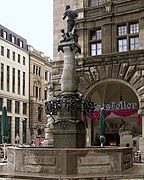
The Pleissenburg was a historical building in the city of Leipzig in Saxony which is in modern-day Germany. It was built in the 13th century by the Margrave Dietrick and named after the river Pleisse which runs nearby. Martin Luther gave the first evangelical sermon in the castle chapel on Pentecost Sunday in 1539.

The Leipzig Debate was a theological disputation originally between Andreas Karlstadt, Martin Luther and Johann Eck. Karlstadt, the dean of the Wittenberg theological faculty, felt that he had to defend Luther against Eck's critical commentary on the 95 Theses and so challenged Johann Eck, a professor of theology at the University of Ingolstadt, to a public debate concerning the doctrines of free will and grace.

The Brühl is a street in the centre of Leipzig, Germany, just within the former city wall. Until the 1930s, it was the international centre of fur trade.
The fountains in Leipzig were originally built as part of the city's water supply and in the 19th and 20th centuries others were added for decorative functions. They are regarded as objects of historical and art historical interest.

The New Town Hall is the seat of the Leipzig city administration since 1905. It stands in Leipzig's district Mitte within the Leipzig's "ring road" on the southwest corner opposite the newly built Propsteikirche. The main tower is, at 114.8 meters or 377 feet, the tallest city hall tower in Germany, "trumping Hamburg's previous record by a whole eight feet".

Altes Stadthaus is a former administrative building in Berlin, Germany, currently used by the Senate. It faces the Molkenmarkt and is bound by four roads; Jüdenstraße, Klosterstraße, Parochialstraße, and Stralauer Straße. Designed by Ludwig Hoffmann, chief of construction for the city, it was built in 1902–11 at a cost of 7 million marks (US$1,750,000) to supplement the Rotes Rathaus.
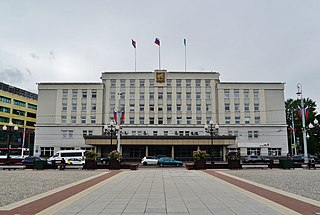
Kaliningrad City Hall is the seat of government in Kaliningrad, Russia. It is located at Victory Square.

Georg Wrba was a German sculptor and graphic artist. He created some 3,000–4,000 works, including as a collaborator of the Zwinger workshop.

The New Town Hall has stood on the Domshof in the centre of Bremen, Germany since 1913. Located behind the Unser-Lieben-Frauen-Kirchhof cemetery, it is adjacent to the older section of the Town Hall with which it forms a harmonious ensemble. Among its sumptuous rooms decorated with local artefacts, the New Town Hall houses the Senate Chamber used by the Senate for its regular meetings and the Great Hall, a venue for official receptions. In 2004, Bremen Town Hall was listed as a UNESCO World Heritage Site, together with the Roland of Bremen, because of its outstanding architecture and testimony to the development of civic autonomy during the Holy Roman Empire.
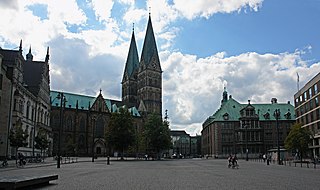
The Domshof is a town square in Bremen, north of the cathedral and the Marktplatz. The Domshof is used for markets as well as larger outdoor events, particularly May Day demonstrations.

The history of the architecture of Leipzig extends from the Middle Ages to the 21st century. Numerous typical buildings and valuable cultural monuments from different eras are still preserved or have been rebuilt. Leipzig, Germany, begins its architectural history with several buildings in the Romanesque style. An example of Gothic architecture in Leipzig is the late Gothic hall vault of the Thomaskirche (1482/1496). In the early modern period, the Old Town Hall was expanded in the Renaissance style. The city experienced the peak of urban design and artistic development from around 1870 to 1914 with historicism, Reformarchitektur and Art Nouveau. Numerous trade fair palaces, commercial buildings, representative buildings such as the Imperial Court Building and the new town hall and the arcade galleries known for the city were built. After the First World War, Leipzig became known for its neoclassicism. During the air raids on Leipzig in World War II, large parts of the city center, which was rich in historic buildings, were destroyed. This was followed in the post-war period by (socialist) neoclassicism and modernism.

Alte Messe Leipzig is the circa 50 hectares site in the southeastern part of Leipzig's district Mitte, where from 1920 until 1991 the technical exhibitions of the Leipzig Trade Fair took place, as well as the buildings that stand on it – but not the trade fair itself, which found a new home at a new site in the northern part of Leipzig. Since 1996 there has been no trade fair activity on the old site.

The Old Town Hall, which dominates the east side of the Markt square in Leipzig's district Mitte, is considered one of Germany's most important secular Renaissance buildings. At the rear is the Naschmarkt. The mayor and the municipal administration have been housed in the New Town Hall since 1905.
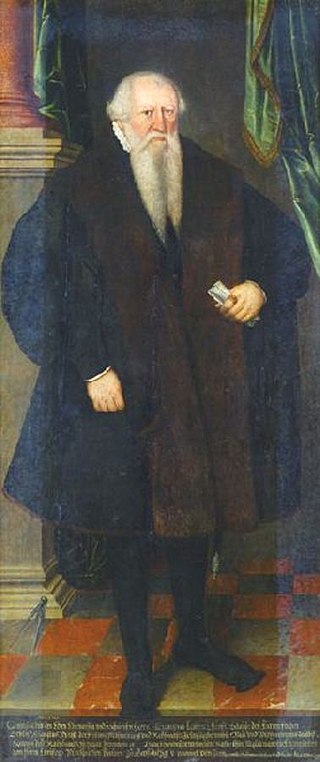
Hieronymus Lotter was a merchant and several times mayor of Leipzig, construction manager for important sovereign building projects in Saxony and the driving force behind extensive building measures by the municipal council in Leipzig. Lotter was the Master builder of Maurice, Elector of Saxony, under the direction of the principal toolmaster and master builder Caspar Vogt von Wierandt. According to earlier research, he was considered an important architect of the Renaissance; today its role is seen in a more differentiated way and above all its organizational function is emphasized.
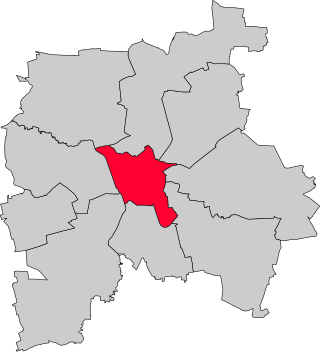
Leipzig-Mitte is one of ten boroughs (Stadtbezirke) of Leipzig, located in the center of the city. It includes numerous architectural monuments. Most of them are located in the subdivision "Zentrum", which is sited inside the Inner City Ring Road and the Promenadenring:

The Promenadenring Leipzig is the oldest municipal landscape park in Germany and one of the most important garden and cultural monuments in the city. The term is also used as a synonym for Leipzig's inner city ring road, a traffic facility that is connected to the green spaces of the Promenadenring. Like the inner city ring road, the promenade ring is about 3.6 kilometers long (2.24 mi.).

The Markt is a square of about 1 ha in Leipzig's district of Mitte, Germany. It is considered the center of the city. The Old Town Hall stands on it, which demonstrates its particular historical importance. The square was named Platz des Friedens from 1950 to 1954. Its paving is a listed heritage monument.

Barthels Hof is a former trade court building complex in Leipzig in Germany, located in the borough Mitte. It is the last “through courtyard” that was preserved almost in its original condition. That means, the carts drove in, the goods were unloaded, and the carts drove out - without turning around. The horses were stabled in the suburbs. Later, from 1893 on, only samples of the goods were shown in the trade fairs and made to order. The Barthels Hof stretches from the market square to Kleine Fleischergasse and is now one of the city's most important sights. Today, it is used for a restaurant and some small shops.

The Mädler Arcade Gallery is the last completely preserved historic shopping arcade covered by an end-to-end glass roof in the city center of Leipzig. It is a facility of upmarket retail, restaurants, offices and cultural establishments.

The Naschmarkt is a small square in the city center of Leipzig. It owes its name to a time when fruit was traded here, which was also considered a sweet treat at the time. Today it serves as an open-air restaurant in the warmer months of the year, while before Christmas it hosts part of the Christmas market.

